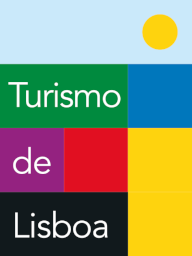Portuguese Paving Route
Artists
Eduardo Nery (Figueira da Foz, 1938 – Lisbon, 2013)
Visual artist, mainly a painter, worked intensively with tile art, tapestry and stained glass, but also with Portuguese paving. He is the author of two of Lisbon’s most relevant paving works located in the Town Hall Square and on Rua da Mouraria/Rua do Arco do Marquês do Alegrete. Another can also be found on Rua Brito Aranha, complementing the mosaic on the inside of the dome of the triumphal arch situated inside the Caixa Geral de Depósitos Home Office building.
Fernanda Fragateiro (Montijo, 1962)
Visual artist with an extremely diverse oeuvre, from sculpture to installation, and illustration to landscaping. From an early stage she took it upon herself to intervene in public places. For the Garden of Ulysses, created within the context of Expo 98, the artist conceived a knit mesh design in white cobblestones, which stand out amidst black cobblestones. It was entitled “Penelope” as a reference to the long and endless tapestry of Ulysses' mythological wife.
Fernando Conduto (Silves, 1937)
A visual artist of recognized merit, both in painting as in sculpture, engraving and design, who excelled in contemporary numismatics. He lectured at the Cooperative Society of Portuguese Engravers, the António Arroio School for Decorative Arts, the Lisbon School of Architecture at the Technical University of Lisbon, and the Faculty of Architecture and Arts of the Lusíada University of Lisbon. He was also co-founder of the Artistic Training Course at the National Society of Fine Arts. For Expo 98, in Rossio dos Olivais, he reinterpreted and recreated Rossio’s traditional Pombalino style paving design called “Mar Largo” (“Broad Sea") with new contemporary sinuosities, creating one of the area’s most striking visual images.
João Abel Manta (Lisbon, 1928)
Having trained as an architect, it was as a visual artist, more specifically as a painter, illustrator and cartoonist, that he became more well known. In terms of public art, besides the large panel of ceramic tiles on Avenida Calouste Gulbenkian (designed in 1970 and installed in 1982), the paving work in Praça dos Restauradores (1971) is also noteworthy.
Maria Keil (Silves, 1914 – Lisbon, 2012)
A visual artist who was part of the second generation of Portuguese modernist painters. Her vast oeuvre encompasses painting, drawing, illustration, graphic and furniture design, tapestry, among others. Distinguishing herself in the renewal of Portuguese tile art, she was the author of a vast majority of the oldest metro stations. She was also one of the artists invited to create new designs for artistic Portuguese paving. The renovation of Praça Luís de Camões with mermaids and caravels (1947), and the lining of the walls of Cervejaria Trindade’s great nave (1959), were also her doing.
